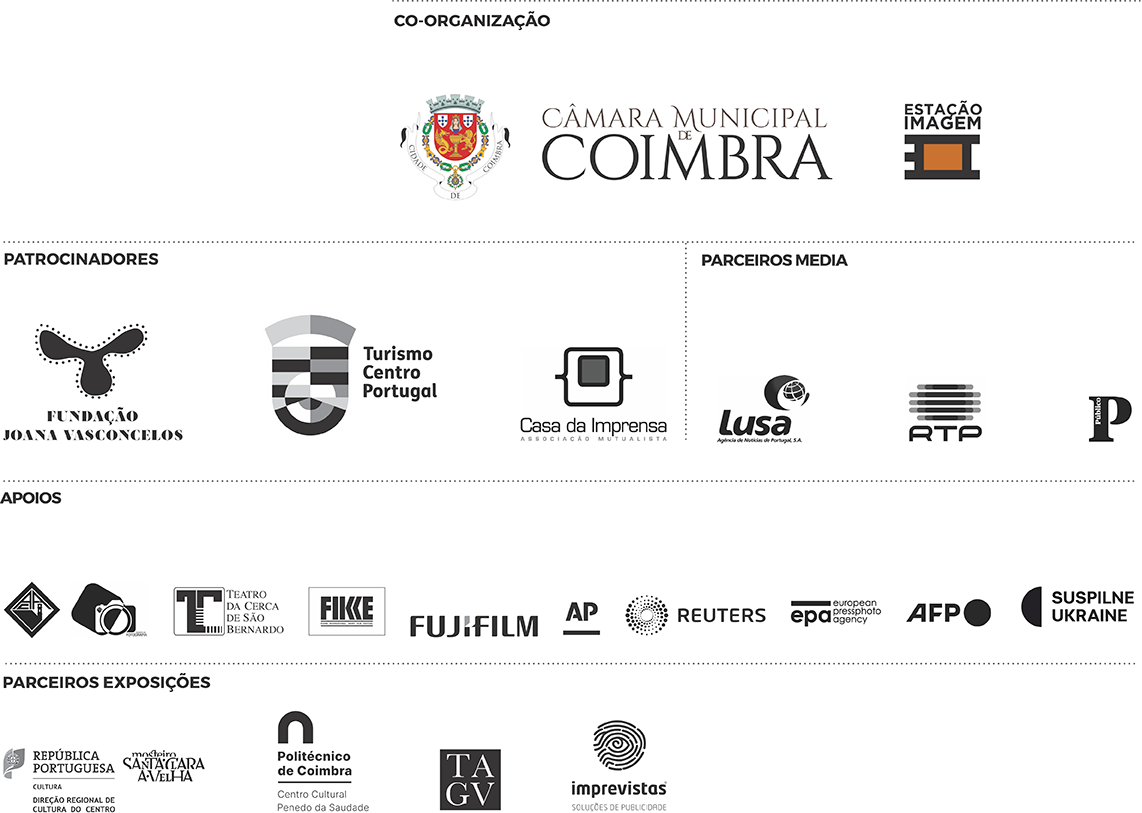AWARD ESTAÇÃO IMAGEM
2022 COIMBRA
FREE ADMISSION
13 SEP—6 NOV
EXHIBITIONS
SALA DA CIDADE
CÂMARA MUNICIPAL DE COIMBRA
TUE TO SAT 13H00—18H00
Ø SUN, MON AND HOL
GUIDED VISIT
17 SEP 15H30
WITH JAMES NACHTWEY
13 SEP—6 NOV
JAMES NACHTWEY
THE UNVANQUISHED
THE UNVANQUISHED
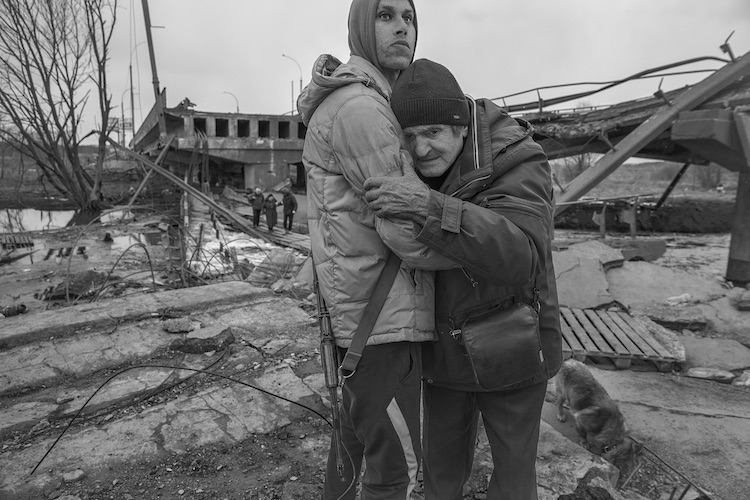
JAMES NACHTWEY Since 1981, James
Nachtwey has dedicated his career to
documenting wars, conflicts, and critical social
issues worldwide. He has received numerous
awards from the journalism profession, as well
as for contributions to art and humanitarian
causes. In 2003 he received the Dan David
Prize. In 2007 he was a recipient of both the
Heinz Family Foundation Award for the arts
and the TED Prize. In 2012 he was awarded the
Dresden Prize for promoting world peace. In
2016, Nachtwey was a recipient of the Princess
of Asturias Award. Five times Nachtwey has
been awarded the Robert Capa Gold Medal
for exceptional courage and enterprise. He
has been named Magazine Photographer
of the Year eight times. Nachtwey has been
awarded four honorary doctorate degrees from
American universities including the Dartmouth
College which recently acquired the entire
archive of his life’s work.
Nachtwey’s photographs are included in
the permanent collections of the Museum
of Modern Art, the Whitney Museum of
American Art, the San Francisco Museum of
Modern Art, the Boston Museum of Fine Arts,
the Bibliothèque nationale de France, the
Pompidou Center, and the Getty Museum
among other venues. He has had numerous
solo exhibitions worldwide.
In 2001, “War Photographer”, a feature length
documentary film about the life and work
of James Nachtwey, was nominated for an
Academy Award. His books include Deeds of
War and Inferno.
© JAMES NACHTWEY An elderly man is assisted and comforted by a Ukrainian volunteer after crossing a wrecked bridge out
of Irpin, on March 9, 2022. The civilian population had been under the attacks of the Russian military. Many people fled the
city by walking across a makeshift bridge that had been destroyed by the Ukrainian forces to halt the advance of the Russian
army towards Kyiv.
The invasion of Ukraine has been described as the first social-media war, and a key aspect of President Volodymyr
Zelensky’s leadership has been his ability to rally his country, and much of the world, via Facebook, Telegram, TikTok, and
Twitter. At the same time, war photographers in Bucha, Irpin, and beyond are working to capture the grisly realities of what
Vladimir Putin insists that his people call a “special military operation.” After an exhausting day in Ukraine recently,
Nachtwey sent this text before getting some sleep: “The barbarity and the senselessness of the Russian onslaught are
hard to believe even as I witness them with my own eyes. Bombing and shelling civilian residences, firing tank rounds
point-blank into homes and hospitals, murdering noncombatants in militarily occupied areas are all tactics being
employed by the Russians in a war that was inflicted on a nonthreatening, neighboring sovereign state. . . . ‘Ordinary’
people are displaying extraordinary courage and determination, if not downright stubbornness, in the face of
tremendous destruction and loss of life.” Nachtwey’s refusal to avert his gaze from the true costs of conflict belongs to a
larger mission: to keep the world from doing so.
GALERIA PINHO DINIS
CASA MUNICIPAL DA CULTURA
UNTIL 15 SEP
10H00—18H30
16 SEP—6 NOV
MON TO FRI 09H00—19H30
SAT 11H00—13H00 / 14H00—19H00
Ø SUN AND HOL
GUIDED VISIT
14 SEP 17H30
WITH DAVID FURST /
LUÍS VASCONCELOS
13 SEP—6 NOV
EVGENIY MALOLETKA / MSTYSLAV CHERNOV
THE SIEGE OF MARIUPOL
THE SIEGE OF MARIUPOL
EXHIBITION PRODUCED WITH THE SUPPORT OF THE ASSOCIATED PRESS [AP]
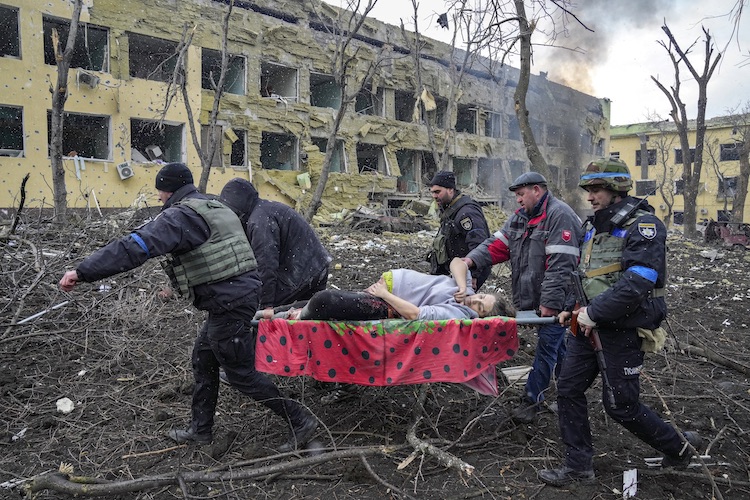
© EVGENIY MALOLETKA is a Ukrainian journalist
and photographer. His work was published in
various prominent outlets such as: TIME, The
New York Times, The Washington Post, Der
Spiegel, Newsweek, The Independent, El Pais,
The Guardian, The Telegraph among others.
In 2015, he was selected to participate in the
Eddie Adams Workshop in New York. He spent
most of his time in eastern Ukraine working
on assignments for The Associated Press, also
contributing with video content.
His footage was widely aired on the BBC,
Euronews, NBC, and other international
broadcasters.
MSTYSLAV CHERNOV is a Ukrainian multiaward winning visual journalist and author of the novel “Dreamtime”. He has worked extensively in eastern Ukraine for the Associated Press primarily contributing with video content. His footage was widely aired on the BBC, Euronews, NBC, and other international broadcasters. For the past 8 years, and initially as a freelancer and later as a staff journalist for the Associated Press, he has been working on stories in Ukraine, Iraq, Syria, Gaza, and all across Europe. He also teaches and creates educational programmes in Documentary Photography and Videography.
MSTYSLAV CHERNOV is a Ukrainian multiaward winning visual journalist and author of the novel “Dreamtime”. He has worked extensively in eastern Ukraine for the Associated Press primarily contributing with video content. His footage was widely aired on the BBC, Euronews, NBC, and other international broadcasters. For the past 8 years, and initially as a freelancer and later as a staff journalist for the Associated Press, he has been working on stories in Ukraine, Iraq, Syria, Gaza, and all across Europe. He also teaches and creates educational programmes in Documentary Photography and Videography.
© EVGENIY MALOLETKA Ukrainian emergency staff and volunteers carry an injured pregnant woman out of a maternity
hospital damaged by shelling. The woman and her baby died after the shelling of the same maternity hospital where she
was set to give birth. Mariupol, Ukraine, March 9, 2022.
If it were not for journalist Evgeniy Maloletka photographing in the besieged city of Mariupol, the world might not have
learned what was happening there as immediately as we have — nor in such irrefutable, horrifying detail. For weeks, Maloletka
and his colleague, videographer Mstyslav Chernov, documented the destruction of the southern seaport as Russian forces
encircled the city and trapped its people there. The journalists reported on mass graves filled with the bodies of children, the
desperate measures to which the hungry populace turned, and the destruction of a maternity hospital. Russian foreign
minister Sergey Lavrov claimed the hospital bombed by Russian forces had been emptied of all patients and doctors, a
narrative refuted by Maloletka’s March 9th photo of medics carrying a bloodied pregnant woman out of the hospital. The
image ran on the front page of nearly every major newspaper worldwide the following day. They published numerous
accounts of Mariupol’s devastation, including jarring details of the deaths of individual children by shrapnel and how, cut off
from water, people were reduced to boiling snow — stories that contradicted Kremlin’s claims that its forces were not
attacking civilians. Mariupol has experienced some of the most devastating shellings since the war began on February 24.
Thousands have died. Chernov and Maloletka ultimately escaped Mariupol in a Hyundai with a family of three after passing 15
Russian checkpoints along a 5km traffic jam. Approximately 30,000 others made it out of the city that same day. “We were the
last journalists in Mariupol,” Chernov said. “Now there are none.”
MUSEU MUNICIPAL DE COIMBRA
EDIFÍCIO CHIADO
TUE TO FRI
10H00—18H00
SAT AND SUN
10H00—13H00 / 14H00—18H00
Ø MON AND HOL
GUIDED VISIT
17 SEP 16H30
WITH DANIEL BEREHULAK
13 SEP—6 NOV
DANIEL BEREHULAK
BUCHA’S RED WINTER
BUCHA’S RED WINTER
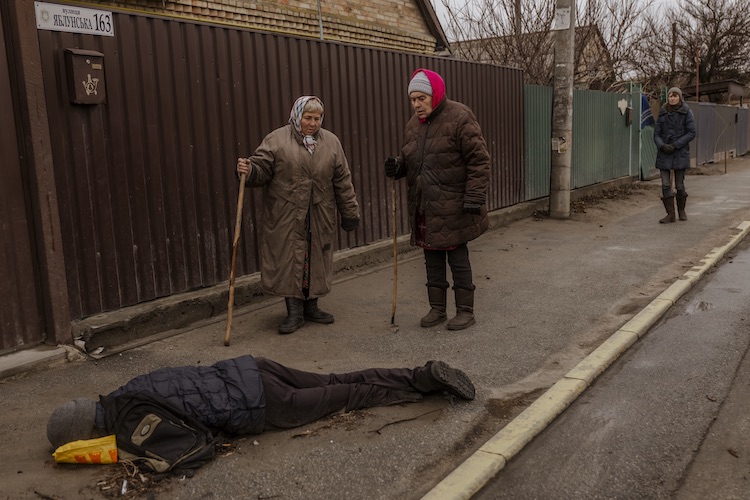
DANIEL BEREHULAK Is an award-winning
photojournalist based in Mexico City, Mexico.
Born into a Ukrainian refugee family, Daniel
grew up on a farm outside of Sydney,
Australia. In 2002 he started freelancing
with Getty Images in Sydney, shooting
mainly sports. Berehulak has visited over 60
countries covering history-shaping events
including the Iraq war, the trial of Saddam
Hussein, elections in India and Afghanistan
and the return of Benazir Bhutto to Pakistan,
and documented people coping with the
aftermath of the tsunami in Japan and the
Chernobyl disaster.
His work has been recognized with two
Pulitzer prizes, six World Press Photo awards;
two Photographer Of The Year awards from
Pictures of the Year International; and the
prestigious John Faber, Olivier Rebbot and
Feature Photography awards from the
Overseas Press Club, among others. He is a
regular contributor to The New York Times
and a member of MAPS.
© DANIEL BEREHULAK Residents stand near the dead body of a civilian in the recently liberated city of Bucha. Ukraine, April 02, 2022.
Daniel Berehulak spent several weeks documenting the war crimes in Bucha, a suburb near Kyiv occupied for several weeks by
the Russian troops. Here, and in the face of fierce resistance by Ukrainian soldiers and volunteers, the Russian army decided to
install a campaign of terror and revenge.
Later, as the demoralized and defeated Russian army retreated, a scene of terror of desolation emerged: civilian bodies strewn
on streets, in backyards, basements, living rooms. Some with gunshots to their heads, some with their hands tied to their backs;
the torture signs were not always evident, and neither are the scars left in the survivors.
This project documents the aftermath of a month of terror in Bucha, where death and destruction was not the worst thing left
behind by the Russian occupiers.
CAFÉ
TEATRO ACADÉMICO
DE GIL VICENTE
OPEN DAILY
14H00—24H00
GUIDED VISIT
16 SEP 18H30
WITH DAVID FURST /
LUÍS VASCONCELOS
13 SEP—6 NOV
MAXIM DONDYUK / OLEKSANDR RATUSHNIAK /
ALEXEY FURMAN / OLEG PEREVERZEV /
VLADYSLAV MUSIIENKO / ROMAN PILIPEY /
STANISLAV KOZLIUK / MIKHAIL PALINCHAK /
YURKO DYACHYSHYN / SERGEI CHUZAVKOV /
IVAN ALVARADO / ANASTASIA VLASOVA /
ALINA SMUTKO / GLEB GARANICH
EXODUS
EXODUS
PHOTOS KINDLY GRANTED BY THE PHOTOGRAPHERS AND BY REUTERS, EPA, AFP, AND SUSPILNE UKRAINE
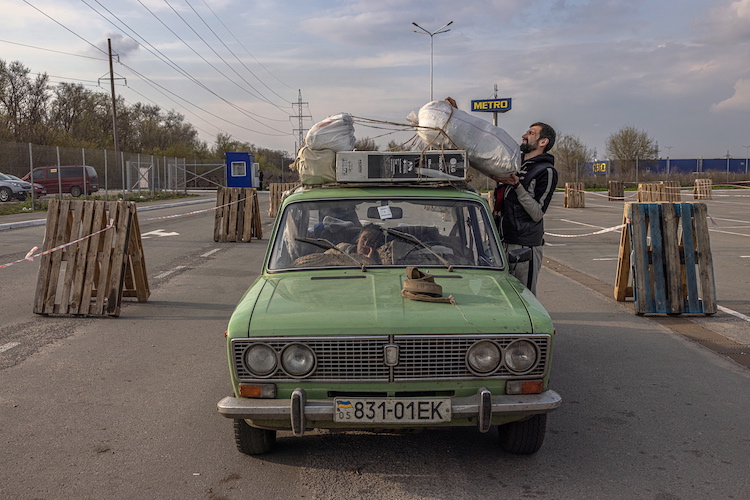
© ROMAN PILIPEY / EPA A Ukrainian man, Valeriy, 33, upon arrival from Mariupol with his grandmother, Varta, 81, unloads a car at the checkout
evacuation point in Zaporizhzhia, Ukraine, 22 April 2022.
In the five months since the invasion of Ukraine began, nearly a third of its people have been forced to flee their homes.
Nearly 7 million are estimated to be displaced inside the country and this is a problem that will linger long after the war
ends. Boarding trains and buses, civilians have poured out of the cities and towns all across eastern Ukraine towards the
relative safety in the west and the capital in the north, Kyiv. Some have left in humanitarian convoys, navigating wrecked
roads at great risk of being hit by gunfire and shelling. Others have left by foot often literally running for their lives. Many
only packed their documents and a handful of belongings hoping to be back soon. But now many have started to fear they
might never return.
GALERIA PINHO DINIS
CASA MUNICIPAL DA CULTURA
UNTIL 15 SEP
10H00—18H30
16 SEP—6 NOV
MON TO FRI 09H00—19H30
SAT 11H00—13H00 / 14H00—19H00
Ø SUN AND HOL
GUIDED VISIT
14 SEP 17H30
WITH DAVID FURST /
LUÍS VASCONCELOS
13 SEP—6 NOV
DMYTRO KOZATSKYI
THE LAST STAND
THE LAST STAND
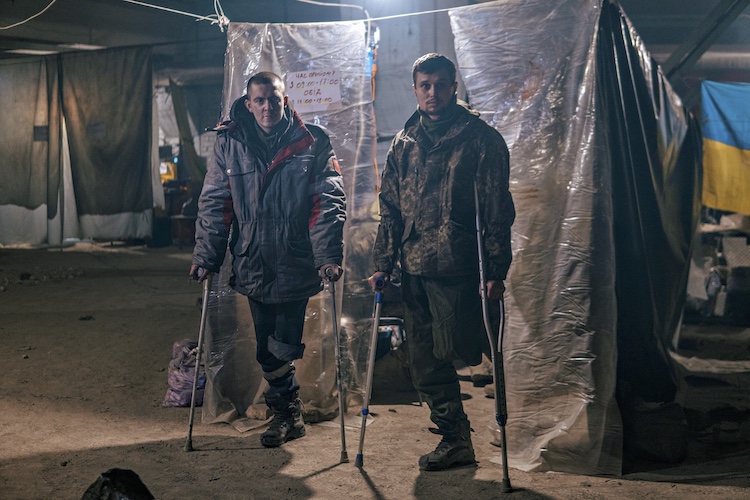
DMYTRO OLEKSANDROVYCH KOZATSKYI (aka Orest) is a Ukrainian soldierphotographer
in the Azov Regiment of the
national guard of Ukraine. He was born in
the town of Malyn, in Zhytomyrska oblast of
Ukraine, and is 26 years old. In 2014, he left
the high school of information technologies
in Ryashev, Poland, and joined the military.
He is also a student at the Ostrog academy.
In 2015, he joined the Azov Regiment in
Mariupol. From March 1 in 2022, he began
documenting the fight at the Azovstal
plant. Until his capture, he functioned as
the head of the press service of the Azov
Regiment, where he documented the
military actions against Russian forces,
as well as the work of the Mariupol field
hospital. Dmytro is still in Russian captivity.
© DMYTRO KOZATSKYI Ukrainian soldiers, injured during fightings against Russian forces, pose inside the Azovstal steel plant. Mariupol, Ukraine, May 10, 2022.
The images show desperate soldiers with swollen faces and missing limbs. They also show a unit cut off from the world inside
the Azovstal steel plant besieged by the overpowering Russian army. Over the course of 80 days Azovstal would become the
cornerstone of the war in Ukraine. Azov Regiment fighter and photographer Dmytro Kozatskyi posted the only known images
from inside the plant throughout the siege. Before his capture he posted a download link to his photos using his social media
“while I am in captivity.” “Well, that’s all”, he wrote. “Thank you from the shelters of Azovstal – the place of my death and my
life.” He is now a prisoner of war. His photos are his legacy.
MOSTEIRO DE
SANTA CLARA-A-VELHA
13 SEP—14 OCT
TUE TO SUN AND HOL
10H00—18h00
15—30 OCT
TUE TO SUN AND HOL
9H00—17h00
Ø MON
GUIDED VISIT
15 SET 17H00
WITH RICARDO LOPES
AND «INTERIOR»
BOOK LAUNCH
13 SEP—30 OCT
RICARDO LOPES
INTERIOR
INTERIOR
GRANT ESTAÇÃO IMAGEM 2020—2022 COIMBRA
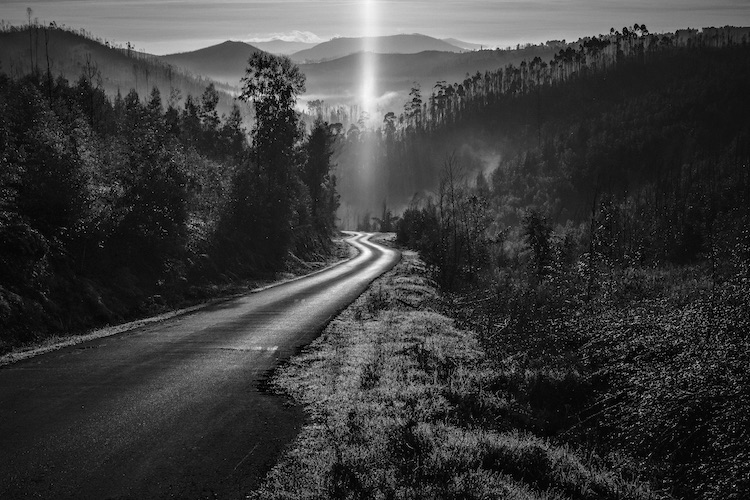
RICARDO LOPES Was born in Lisbon
in 1990. He found his interest in report
photojournalism in 2016. Lopes selftaught
the tenets of photography using a
35mm analogic camera and printing in an
improvised home laboratory set
in his bathroom. In 2017 Lopes initiated
his studies in photojournalism at Cenjor
(Centro Protocolar de Formação Profissional
para Jornalistas) and, in the same year,
started to work for Global Media group
publishing in the daily outlets Diário de Notícias
and Jornal de Notícias.
He is a regular contributor to Público and
Expresso newspapers, covering various
subjects for the daily newsprints and weekly
supplements. Nominated for the Magnum
Photos Portfolio Review and also
the Visa Pour L’Image 2017 Canon Student
Program. Finalist in the LensCulture Portrait
Awards 2019, prize winner of Prize Estação
Imagem 2019 Portrait category, and also
the selected winner of Estação Imagem
Grant award 2020. Lopes currently works as
a freelancer.
© RICARDO LOPES Foz de Alge valley in Figueiró dos Vinhos, a region that has lost more than half of its inhabitants since 1960 (INE statistics). 22.12.2018.
After fifty years the central region of Portugal continues to struggle with the consequences of depopulation particularly from
the 1960’s onwards.
Important underpinnings to the exodus during the decades of the Estado Novo dictatorship were the conspicuous poverty of
a rural majority coupled with economic issues associated with subsistence farming. Amidst a geography of small land plots,
low yield soils, and overall challenging conditions to mechanical farming, the subsistence of families and social rituals were
then intimately entwined with the artisanal production of olive oil, cereals, and cheese.
Such ways of living and livelihoods were utterly transformed after the 1974 revolution and further integration of the country
in the European economic context. The youth, seeking better job opportunities, education, and access to services and
infrastructures, migrated to central Europe or settled in Portugal’s industrialised urban regions along the coast.
Today the country’s inland is inhabited by a largely ageing population in scattered villages and small towns. Rural traditions
and popular knowledge are at risk of disappearing altogether. Low returns from a thoroughly partitioned rural cadastre and
the indifference of absent, urbanised landowners have contributed to the expansion of the unapt or unplanned forest cover
and with it the recurrent wildfires that torment the country like a plague. In 2017 and in this area alone, almost 740 thousand
acres of forest were caught in the blazes and over 100 people lost their lives in the sweeping wildfires.
Glaringly obvious as it is, here we have most of Portugal’s territory fading away to the oblivion of city dwellers, neglected and
concealed by the state administration in the urban coast. Even so, many still call these places their home. The present work is
about their life stories.
55% of the world population now lives in urban areas. According to the United Nations 2018 Revision of World Urbanisation
Prospects, this number is projected to rise to 68% in 2050 notably due to the urbanising global south.
RICARDO LOPES JUNE 2022
SALA SÁ DA BANDEIRA
CASA MUNICIPAL DA CULTURA
11H00
Free admission, limited seats
14—16 SEP
PHOTOJOURNALISM OPEN CLASS
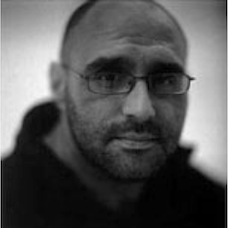
© DR
JOÃO SILVA
“ACTING DESPITE FEAR”
“ACTING DESPITE FEAR”
Photographer for The New York Times and member of the celebrated The Bang Bang Club, a group of four young photographers who reported
on the last bloody days of the apartheid. Together they covered the violence that ravaged the townships in South Africa.
João Silva began photographing in 1989 and from 1990 became a freelancer for the Johannesburg Herald. In 1992 he was hired by The Star
newspaper (Johannesburg) and in 1994 he joined The Associated Press. In 1996 he began working for The New York Times, becoming the paper’s
freelance journalist for Southern Africa and as a contract photographer from 2000 onwards. Author of the book The Bang-Bang Club: Snapshots
from a Hidden War (2000), with photographer Greg Marinovich: “How far can you go to get a good picture? Is a picture worth a life? Bang-Bang
Club is a vivid and extremely personal portrait about war and photojournalism, written by two men whose lives and work testify to how far a
journalist is willing to go to tell the truth.” In 2005, he published the book In the Company of God, about the Iraqi Shi’a during the American
occupation. Besides South Africa, he has worked, among others, in Afghanistan, Angola, Brazil, the Balkans, Georgia, Israel, Iraq, Pakistan,
Somalia, and Sudan. In 1992 he won the South African Press Photographer of the Year Award and was selected for the Joop Swart World Press
Photo Masterclass in 1995. He has also won several photography awards, including the World Press Photo and the Overseas Press Club of
America. In October 2010, he was seriously injured in an antipersonnel mine accident in southern Afghanistan. Due to the severity of his injuries,
the photographer had his legs amputated. He continued to photograph, even while injured. In late July 2011 – after undergoing a long process of
motor re-adaptation with prosthetics – he returned to work as a photojournalist. During his recovery in a US military hospital, he was awarded
the title of Chevalier de l’Ordre des Arts et des Lettres by the French government. On March 15, 2012 he received the Order of Liberty from the
Portuguese government, intended to honor relevant services rendered in defense of the values of civilization. In the same year he was also
awarded the title of Doctor Honoris Causa in Fine Arts by the Corcoran School of Arts and Design in Washington DC, USA. Silva was born in Lisbon
in 1966, and lives with his family in Johannesburg, South Africa.
AUDITORIUM
MOSTEIRO DE
SANTA CLARA-A-VELHA
CONTINUOUS SESSIONS
FROM 10:30 A.M
13—17 SEP
DOCS FIKE 2021
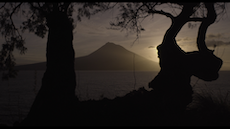
© DR
BEST PORTUGUESE SHORT FILM AWARD
WHAT IS NOT SEEN
Directed by PAULO ABREU
Portugal, DOC, 2020, 24'
Documentary film shot in 2015 and 2016 in Pico and Faial islands in the Azores. The idea for this film happened by chance. While revisiting an old footage from a project cancelled years prior, a hidden film emerged. The power of Nature and the role of chance in the creative process build a narrative about life, friendship, cinema and the influence of the unexpected in artistic creation.
ENGLISH SUBTITLES
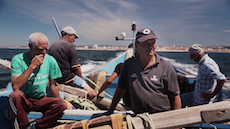
© DR
NEW TALENTS AWARD
CARAPAU DE ESPINHO
Directed by ANDRÉ ROSEIRA
Portugal, DOC, 2021, 28'
In the costal city of Espinho a small fishing community plays its odds in the ocean everyday. Their home is ‘o bairro’ (‘the district’): a parallel world where the currency is still the escudo and an ancestral form of fishing called “Arte Xávega” is kept alive at dawn, when small wooden boats venture into the cold atlantic waters.
ENGLISH SUBTITLES
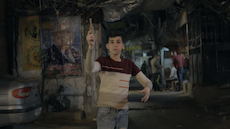
© DR
BEST DOCUMENTARY ESTAÇÃO IMAGEM JURY
SON OF THE STREETS
Directed by MOHAMMED ALMUGHANNI
Poland / Lebanon,, DOC, 2020, 34'
Khodor (13) a child whose family tries to issue him an ID document that proves his existence and gives him the right to education, healthcare and movement outside of the Palestinian refugee camp of Shatila in Beirut, Lebanon. In the process, many of the family old secrets are revealed.
PORTUGUESE AND ENGLISH SUBTITLES
AWARD CEREMONY
17 SEP / SAT / 11H00
TEATRO DA CERCA DE SÃO BERNARDO
17 SEP / SAT / 11H00
TEATRO DA CERCA DE SÃO BERNARDO
CONFERENCE WITH JAMES NACHTWEY, MSTYSLAV CHERNOV AND DANIEL BEREHULAK
WHAT IS PHOTOJOURNALISM TODAY IN UKRAINE? CHAIRED BY NICOLAU SANTOS
17 SEP / SAT / 17H30
TEATRO DA CERCA DE SÃO BERNARDO
WHAT IS PHOTOJOURNALISM TODAY IN UKRAINE? CHAIRED BY NICOLAU SANTOS
17 SEP / SAT / 17H30
TEATRO DA CERCA DE SÃO BERNARDO
JURY MEMBERS
AWARD ESTAÇÃO IMAGEM 2022 COIMBRA
AWARD ESTAÇÃO IMAGEM 2022 COIMBRA
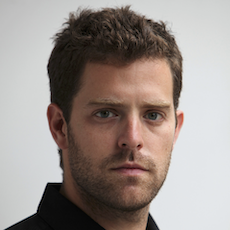
© DR
DAVID
FURST JURY CHAIR
Furst is a father and visual curator based in Paris.
He started his career in 2001 as a photojournalist and spent nearly a decade documenting social and political conflicts in the Middle East. In 2010, he became International Picture Editor of The New York Times. During his 11 year tenure, he led the newspaper’s enhanced international emphasis on photography that won numerous awards including the Pulitzer Prize for photography four years in a row, The World Press Photo of the Year, Pictures of the Year International, and the Visa d’Or, among others. As a visual curator, Furst believes in the importance of weaving together multidisciplinary approaches that allow people to connect and empathize with each story.
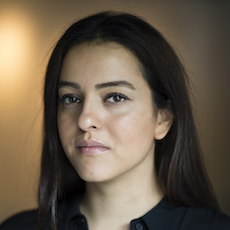
© DR
NEWSHA
TAVAKOLIAN
Tavakolian is a photographer and a member of Magnum Photos.
She began working for the Iranian press at the age of 16, covering wars in Iraq and a range of social issues in her native Iran. Through her lens, Tavakolian explores social experiences in her homeland, Iran, and human conflicts near and far. Tavakolian has photographed the women-guerrilla fighters in Iraqi Kurdistan, Syria and Colombia, the banned Iranian womensingers and the lives of people living under sanctions. Tavakolian was the fifth laureate of the 2014 Carmignac Gestion Photojournalism Award and the first laureate of the 2015 Prince Claus Award. Amongst others, Tavakolian’s work has found its place within the private collections of international institutions, including the Victoria & Albert Museum, the Los Angeles County Museum of Art (LACMA), the British Museum, Sackler Gallery, and the Boston Museum of Fine Arts.
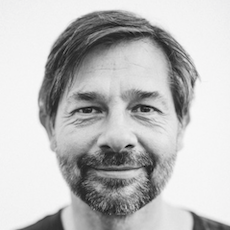
© DR
DANIEL
BEREHULAK
Berehulak is an award-winning photojournalist based in Mexico City, Mexico.
Born into a Ukrainian refugee family, Daniel grew up on a farm outside of Sydney, Australia. In 2002 he started freelancing with Getty Images in Sydney, shooting mainly sports. Daniel has visited over 60 countries covering history-shaping events including the Iraq war, the trial of Saddam Hussein, elections in India and Afghanistan and the return of Benazir Bhutto to Pakistan, and documented people coping with the aftermath of the tsunami in Japan and the Chernobyl disaster. His work has been recognized with two Pulitzer prizes, six World Press Photo awards; two Photographer Of The Year awards from Pictures of the Year International; and the prestigious John Faber, Olivier Rebbot and Feature Photography awards from the Overseas Press Club, among others. He is a regular contributor to The New York Times and a member of MAPS.
COIMBRA
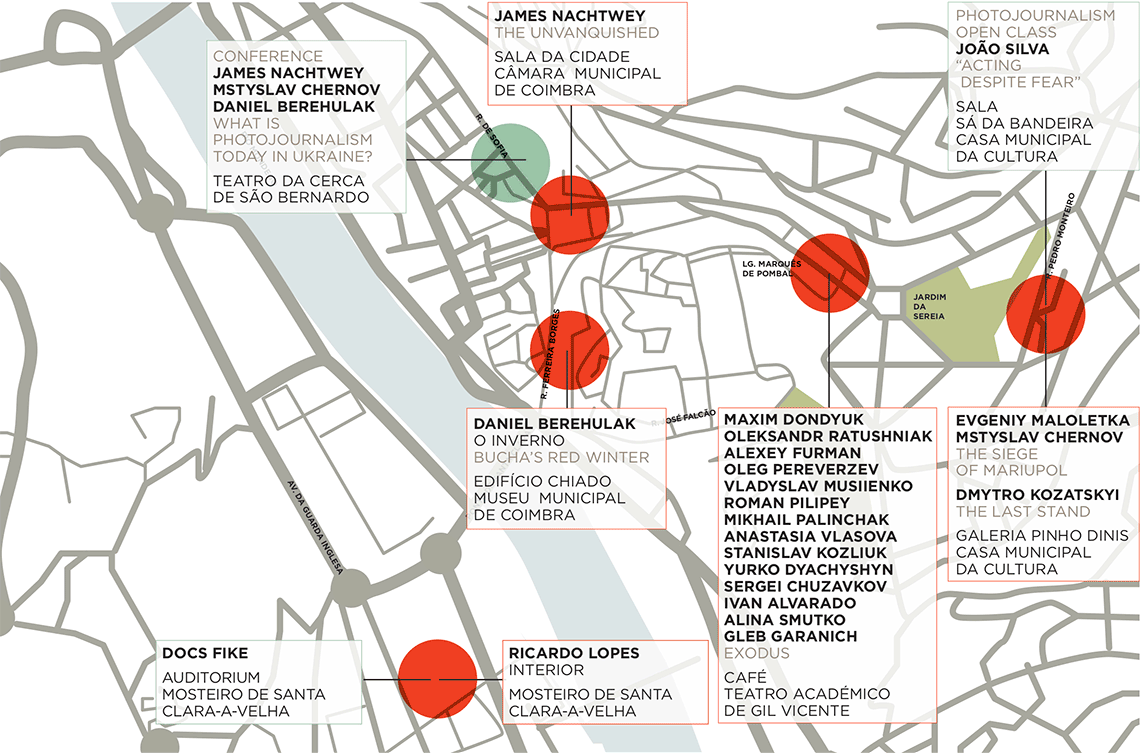
CREDITS
HEAD DIRECTION
Luís Vasconcelos
COORDINATION
Luís Vasconcelos e Susana Cruz
DESIGN [COMUNICATION AND EXHIBITIONS]
Susana Cruz
Website
Paulo Cruz
TEXT EDITING
José Augusto Moreira
PHOTOGRAPHY
Luís Barra
PRODUCTION SUPPORT
MARTA MOREIRA
HENRIQUE MALHA
VÍDEO
Abel Rosa
TRANSLATION
Vera Baeta
PROOFREADING
Susana Baeta
AWARD SOUNDTRACK / INSTAGRAM
Henrique Malha
PHOTOGRAPHY POST-PRODUCTION
José Francisco
PRINTING [CATALOGUE]
Norprint – A casa do livro
PHOTO PRINTING [EXHIBITIONS]
Pedro Leite
OTHER PRINTING
Imprevistas
